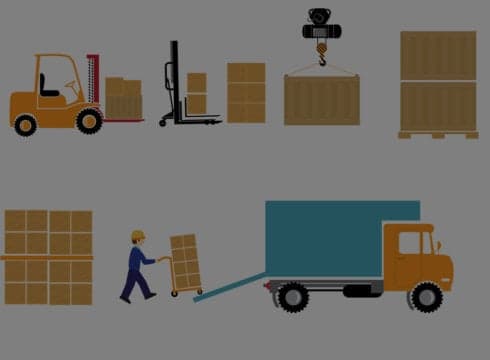The demand was concentrated in Mumbai (23%), Delhi-NCR and Bengaluru (19%)
Third-party logistics, ecommerce, engineering and manufacturing units contributed about 35%, 23% and 15% to the market
Post GST implementation, there has been an increase in the demand for warehousing facilities
Inc42 Daily Brief
Stay Ahead With Daily News & Analysis on India’s Tech & Startup Economy
The logistics sector in India is experiencing structural shifts through ecommerce and automation which is continually blurring the lines between the retail sector and ecommerce marketplaces and leading to a transformation in supply chains as well as a rise in investments.
In a new report, US-based commercial real estate services and investment firm, CBRE said the overall absorption in the logistics sector in 2018 touched 24 Mn sq ft with the majority of the demand concentrated in Mumbai (23%), Delhi-NCR and Bengaluru (19%), followed by Chennai and Hyderabad accounting for about 14% and 12% respectively.
Third-party logistics (3PL), ecommerce, and engineering and manufacturing units drove demand during the year, contributing about 35%, 23% and 15% to the overall market respectively.
On the rental front, several micro markets saw appreciation due to an increased demand coupled with limited investment-grade supply. The markets that witnessed rental appreciation during the year were Bhiwandi in Mumbai (23%), the Western corridor in Hyderabad (20%), NH-6 in Kolkata (16%) and the Northern belt in Chennai (11%).
These markets were closely followed by the micro-markets of NCR, Western belt in Chennai, Southern corridor in Bangalore, NH-2 in Kolkata and Aslali in Ahmedabad, treading in the range of 8-10%.
The report also stated that the ongoing trend of omnichannel retailing and supply chain development will continue and there will be a strong demand for modern industrial and logistics facilities in 2019. In these, ecommerce will be a key demand accelerator as the handling of online products takes up to three times more space than in conventional spaces. This also is one of the factors for ecommerce companies to use existing shelf space at retail outlets for their products in the hybrid ecommerce model, such as the ones being pursued by Paytm Mall and Reliance Jio’s upcoming service.
Owing to the overall demand in the sector, the ecommerce industry has leased about 10 Mn sq. ft. of space across various cities — this well grow as ecommerce expands its operations in Tier 2 and 3 cities.
Impact Of New FDI Regulations On Ecommerce
India’s revised policy on FDI in ecommerce restricts equity participation and limits inventory purchase from a single vendor. The new regulations also prevent exclusive marketing deals with select vendors. The draft ecommerce policy announced in February 2019 covers cross-border data sharing, supply chain transparency, product authenticity, and last mile connectivity amongst others.
These changes are expected to have a dent on the “sentiment of the e-commerce fraternity” which may lead to a short slowdown in the demand. Nonetheless, ecommerce will remain to be a key demand driver in the logistics sector.
Warehousing Demand To Stay Up
Post GST implementation, there has been an increase in the demand for warehousing facilities, which is a sign of the ecommerce and retail market bouncing back from the travails of GST. According to the report, the growth in leasing activity in 2018 versus 2017 was close to 44%.
The report also stated that the trend for e-commerce platforms to own and operate their own facilities will result in more built-to-suit facilities, resulting in lease rates going down.
Since the food and grocery delivery sector is expanding, it is also possible that companies will come up with their own cold chain facilities and temperature-controlled warehouses, which will further boost this segment within the logistics sector. As the segment witnesses increased traction, we expect players to display interest in cold chain facilities and temperature-controlled warehouses.
Technology To Improve Efficiency and Flexibility
Automation is about to overhaul ecommerce logistics and warehousing big time, and to improve their supply chain efficiency, businesses are using innovative tech solutions to improve inventory management.
Fleet management software (provides live tracking of goods), IoT systems for inventory identification and pallet storage are gaining popularity as several startups are aiming to bridge the technological gap by adopting Industry 4.0 standards. The introduction of IoT is expected to impact operations by creating smart warehouses that improve supply chain efficiencies, CBRE said in the report.
Besides the innovation from corporations and startups, the government’s focus on infrastructure initiatives will be a big factor in spurring growth in this sector and will ensure greater adoption and penetration of technology in the logistics value and supply chain.
{{#name}}{{name}}{{/name}}{{^name}}-{{/name}}
{{#description}}{{description}}...{{/description}}{{^description}}-{{/description}}
Note: We at Inc42 take our ethics very seriously. More information about it can be found here.


